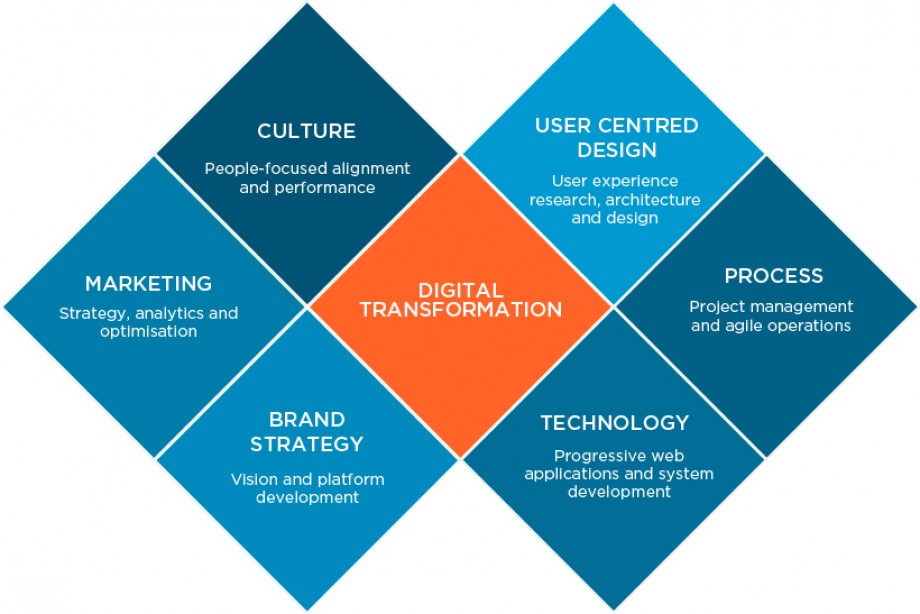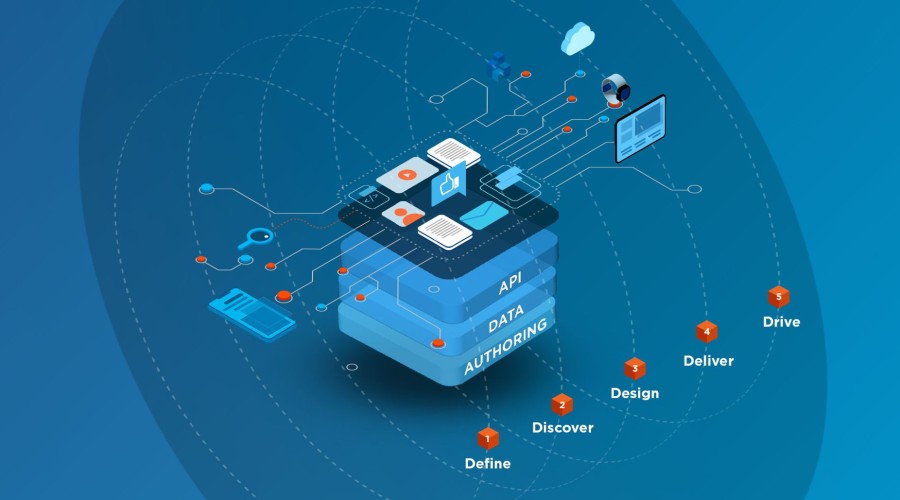The future of your business depends upon using Digital Transformation to become more relevant to customers and drive growth. But what is digital transformation strategy? Where do you start? Who needs to ‘own’ and drive it?
Digital transformation is the biggest challenge facing businesses in the 21st century. Technology is changing quickly, and to survive in this brave new world you will need to implement digital transformation in your business. But it’s tricky to define digital transformation, and not many organisations know how to deliver business change themselves.
In our latest white paper, The Digital Transformation Model, we answer the biggest questions about how to use digital to transform your business. Our digital transformation guide centres on a handy model you can use to define your digital transformation and support organisational change within your business.
In this article, we’ll take you on a lightning speed tour of the six factors you’ll need to implement digital transformation in 2018.
Prefer in-depth analysis? Then download the DT Model now.

Our Digital Transformation Model encapsulates the diverse facets of this field. Explore How We Work for more.
Define digital transformation
It's tricky to define digital transformation. I'd say it's a process of user-focused organisational change. It utilises digital technology, such as CRM automation tools and UX design practice, to catalyse your brand, business efficiency and customer experience.
Namely, digital transformation is the logical next step of UX design, as it brings the array of digital development services into one. Without a user-centred design focus, your digital transformation will be for nothing. Keep your customers and users at the heart of how you define digital transformation for your organisation.
6 key factors to starting (and embracing) digital transformation
1. Define your culture
Your organisation needs a vision that every employee in each department can get behind. That’s because you can achieve what looks like the unachievable when you create a workplace culture that represents your vision. Your internal culture and vision can make or break your digital transformation.
None of this is news; internal cultures have always been a driving force of organisations. Take the famous story of US President John F. Kennedy visiting NASA in 1962. During his visit, JFK asked a janitor what he was doing. “I’m helping to put a man on the moon”, replied the janitor. Whether the story is true or not is beside the point: this story illustrates the importance of internal culture within an organisation.
Digital transformation affects every employee within your organisation, so everyone needs to be on board with your mission statement and work to make your aims a reality. You will need to seek support from your senior stakeholders and be the driver for change to create a can-do, positive workplace.
What’s more, if you are going to adopt new digital technologies within your organisation, they need to work with how your team works. The two – your staff and your new technologies – should work off of one another. This is why you need to define your internal culture: you can’t transform your business if you don’t know who you are currently.
Never underestimate the impact of change on your culture during a digital transformation.
2. User-centricity is king
Mapping out your user journey is the key to define digital transformation for your organisation. This should be validated with real users. To drive change within your business you must align your user experience with your organisation’s efficiency. A value-driven company with nurtured customers is imperative to your initiative.
When focusing on your customers, you will need to test multiple strategies and engage with your users at each stage. Keep an eye on trends or patterns. At this and any future stage, you are solving problems – not delivering a feature.
Customers will not see all of your digital transformation. In fact, the most effective transformations impact both the things they can and cannot see. Your website and customer service are all part of your customers’ experience with your company.
3. Brand strategy
Now you have your vision and are paving the way to change, you can define your brand’s personality and identity as well as your mission and values. Determining how your brand behaves and communicates with customers highlights your differentiation from competitors.
Your brand personality will then form your corporate identity that customers will resonate with and know what to expect from your company.
Create a business model that allows you to achieve the scale of success you desire. For instance, if you want to have an international business, you will need to spread your ideas and create ambassadors or employees in other countries.
You could even try to move away from e-mail memos and consider a creative way to communicate your brand values, mission and vision to employees as a daily visual reminder for your team.
We created our design system in the form of an engaging, visual Brand Bible.
4. Define your processes
You will need an understanding of what is your digital transformation strategy. Look into case studies of how others transformed their business. Keep in mind that change is different for each business; what worked elsewhere may not work for you.
Define who is responsible for each task or project and what processes, technology, initiatives and training you should invest in. Even new processes will require a vision to incorporate your new agile thinking. Create a roadmap for any required systems including quality management systems.
By transforming how your business operates, you pave the way forward as a change ambassador. Understand the process to define digital transformation and where your customers sit within this.
Gather valuable data by deciding what customer experience metrics you will measure through the entire transformation process to help develop your digital strategy.
5. Iterate and improve
Your digital transformation is a journey. Remind yourself and colleagues regularly why you are on this path.
Throughout your transformation ensure continual reflection and evaluate your processes to enable you to make any necessary improvements.
6. Surround yourself with the right people
Successful digital transformations are led from the top. Take ownership of the project and seek the support of key stakeholders. Once on board, support them as best you can to help them do their role and be an ambassador for the change.
Determine other support you may need, for instance, an experienced agency, hiring new team members or utilising in-house skills of your current team.
Final thoughts
Whichever shape your definition of Digital Transformation takes, customers and the value you bring to your users is key. It’s important to remember that Digital Transformation never ends: it is an ongoing process.
Are you ready to get started? Read our new white paper, the Digital Transformation Model today.
The digital transformation process is challenging for organisations to champion alone. If you’d like an experienced set of hands, Cyber-Duck is here to help. We are a London and Leeds-based digital transformation agency that specialises in user experience design, branding and web development. We can help you to future-proof your business today – get in touch with us to find out more.





